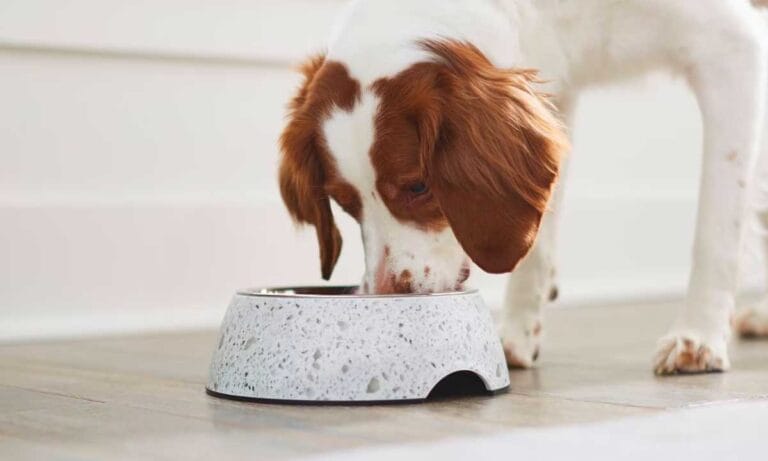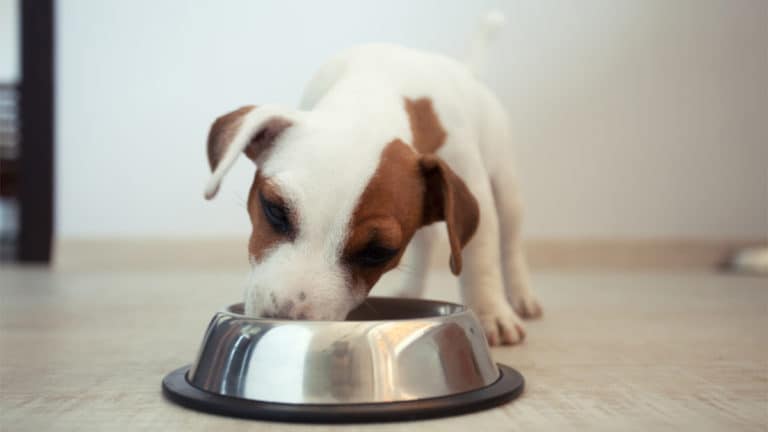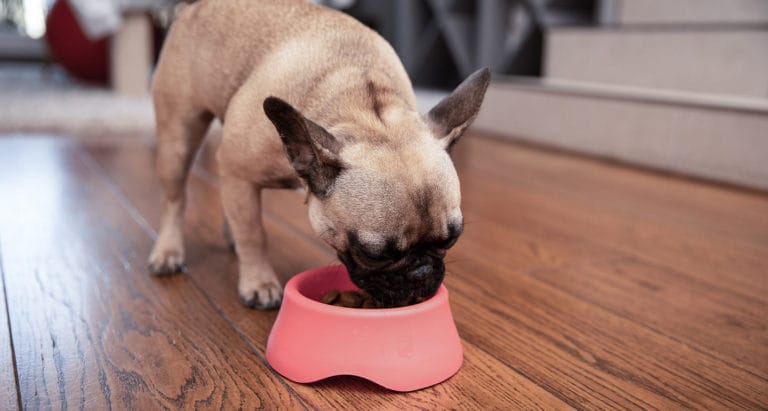Puppies grow FAST, so it’s perfectly natural to wonder if they’re getting all the nutrition they need to become happy and healthy adult dogs. Figuring out how much to feed a puppy and how often to feed a puppy are key parts of the equation, but those numbers depend on a lot of factors, including:
- Age
- Breed
- Size
- Pet food they’re eating
- Medical issues
- Body condition score (skinny, fat, or just right?)
- Activity level
- Whether the puppy has been spayed or neutered
With that said, figuring out how much and how often to feed a puppy who is healthy and living a typical puppy life isn’t all that hard. We’re helping you figure out the right numbers with some simple puppy feeding charts. First, let’s take a look at some questions.
Factors to Consider for Your Puppy's Feeding Schedule
When figuring out how often to feed your puppy, there are two main factors to consider: your puppy's age and size.
How Old Is Your Puppy?
The age of your cuddly puppy makes a big difference in how often they eat. Newborn puppies should nurse as frequently as mom will allow. However, if their mother’s milk is not available or is insufficient, you’ll need to help them get enough nutrition by bottle-feeding them frequently.
Once the puppy is approximately 4 to 6 weeks of age, they can begin transitioning to puppy food. To help them transition, it’s helpful to offer small amounts of puppy food that’s been softened with a puppy milk replacer (or warm water) four times per day.
By 6 to 8 weeks of age, most puppies do well eating 4 meals of puppy food a day (maybe 5 for the tiniest of pups). By 12 to 16 weeks of age, puppies can usually eat three times a day.
How Big Is Your Puppy?
A dog’s size also influences how often a puppy should eat. Toy breeds, such as Chihuahuas, are prone to developing low blood sugar levels (hypoglycemia) when they don’t eat often enough. These small breed puppies may need to be fed four to six times a day until they are roughly 16 weeks of age to prevent hypoglycemia.
On the other paw, some giant and large breed puppies—such as Great Danes—are prone to bloating. For that reason, veterinarians frequently recommend feeding several smaller meals a day to help prevent bloat in large breed puppies.
How Often to Feed a Puppy
6 Weeks to 4 Months
|
Around 4 Months
|
6 Months to Adult |
Adult |
|
|
Toy Breeds |
4 to 5 meals per day |
3 to 4 meals per day |
2 to 3 meals per day |
2 meals per day |
|
Small and Medium Breeds |
3 meals per day |
2 meals per day |
2 meals per day |
2 meals per day |
|
Large and Giant Breeds |
3 meals per day |
2 to 3 meals per day |
2 to 3 meals per day |
2 to 3 meals per day |
How Much to Feed a Puppy
Feeding your pup measured amounts of food at each meal is the best way to keep track of their appetite and ensure that they aren’t getting too much or too little of those noms.
Of course, the type of pet food being fed and a puppy’s unique physiology and activity play a big role as well.
Puppy food labels have charts for how often and how much you should feed that particular food to your puppy. You can also refer to this handy puppy feeding chart below. Divide the total amount by the number of meals your puppy eats per day to find out how much to give at each meal.
Download our Puppy Feeding Schedule printable to help you keep track of your puppy's food intake and schedule.
Puppy Feeding Chart
Puppy Less Than 4 Months Old |
Puppy More Than 4 Months Old |
|
|
Puppy’s Current Weight (pounds) |
Amount of Dry Food (cups per day) |
Amount of Dry Food (cups per day) |
|
Less than 5 |
½ - 1 |
⅓ - 1 |
|
5 - 10 |
¾ - 2¼ |
½ - 1½ |
|
10 - 20 |
¾ - 3 |
¾ - 2¼ |
|
20 - 50 |
1¼ - 5 |
1 - 4½ |
|
50 - 75 |
2 - 6 |
|
|
75 - 100 |
3 - 7 |
|
|
More than 100 |
4 - 9 or more |
Monitor your pup’s body condition closely so you can fine-tune their diet. For instance, if your puppy is getting a bit chunky, then cut back a smidge. Too thin? Add a little extra to each meal. The science isn’t exact because every puppy is very unique!
Our puppy feeding guide can also give you an idea of the number of calories your puppy should be taking in each day, which you can then use to calculate the amount of dry dog food or wet dog food (or both!) that you offer at each meal.
If feeding your pup measured meals isn’t possible, we get it. As an alternative, try putting out an ample supply of food at each meal and then pick up what’s left after 10 to 15 minutes. Some puppies do well with this type of timed feeding, but you need to watch their weight carefully to make sure they aren’t getting too skinny or overweight.
When Do You Start Feeding Adult Dog Food?
When puppies reach their full adult height, it’s officially time to gradually transition them to adult dog food. This should be done very slowly by adding increasing amounts of adult food into decreasing amounts of puppy food. It should take about a week for them to completely switch over to adult food.
Here’s when most puppies reach their adult height and can start eating adult dog food:
- Toy breeds: 6 to 9 months of age
- Small and medium breeds: 8 to 12 months of age
- Large and giant breeds: 12 to 24 months of age
Read More
Share:















